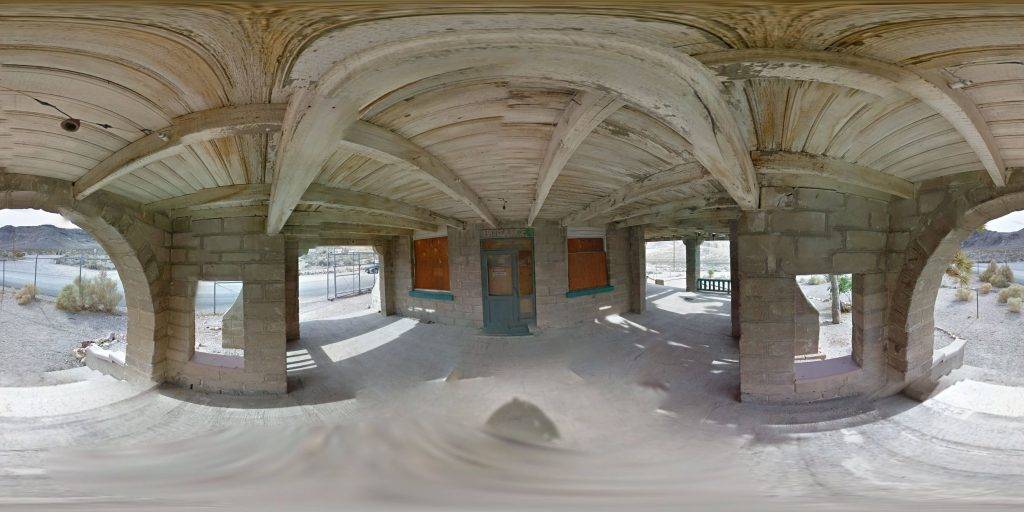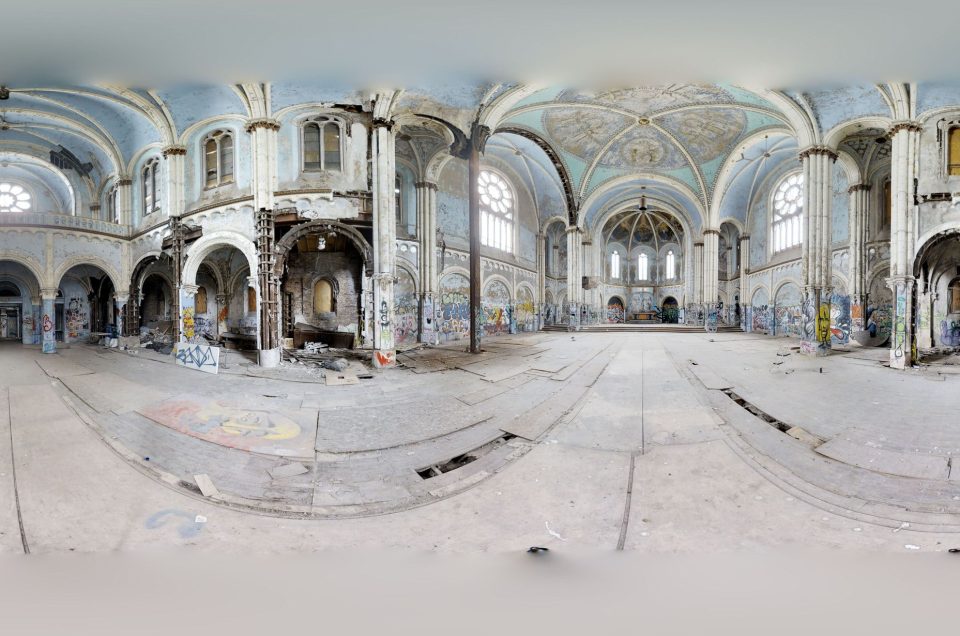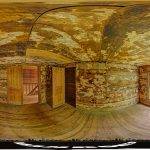The Rhyolite Train Depot: A Monument of Boom and Bust in Nevada
Embark on an immersive virtual journey and explore the historic Rhyolite Train Depot, nestled at the core of the enigmatic ghost town in Nevada. Through a captivating 360-degree panoramic tour, you will have the opportunity to virtually wander through this significant landmark. Experience the unique atmosphere of the ghost town, as the virtual tour allows you to delve into every nook and cranny of the Rhyolite Train Depot. Discover the architectural details, imagine the sounds of trains from a bygone era, and feel the eerie yet fascinating aura of a place frozen in time, all from the comfort of your own home. This virtual experience promises to be both enlightening and hauntingly beautiful, offering a rare glimpse into a piece of Nevada’s rich history.
Images by: Google Maps Street View
Images by: Google Maps Street View
Image by: Saramoira Shields
About the Ghost Town
In the early 20th century, amidst the fever of the gold rush, the town of Rhyolite, Nevada, emerged as a symbol of rapid growth and equally rapid decline. Central to this boomtown’s story is the Rhyolite Train Depot, a structure that encapsulates the history, ambition, and eventual downfall of Rhyolite.
Founding of Rhyolite and the Role of Charles M. Schwab
Rhyolite was founded in 1904 after Shorty Harris and Ed Cross discovered gold in the Rhyolite Quartz at the Bullfrog mine. The discovery led to a surge in population and development. By 1906, the town boasted two railroad lines and a population of 10,000. Charles M. Schwab, a prominent financier, invested heavily in Rhyolite by purchasing the Montgomery Shoshone Mine and the Bullfrog Mining District. His investment spurred the development of modern amenities in the town, including concrete sidewalks, electric lights, a hydroelectric power line, water mains, and telephone and telegraph lines.
The Las Vegas & Tonopah Railroad and the Depot’s Construction
The Las Vegas & Tonopah Railroad (LV & T) was instrumental in connecting Rhyolite to the outside world. In January 1906, the first rails of the LV & T were laid, and by December of that year, the first train from the LV & T arrived in Rhyolite with about 100 passengers. Recognizing the necessity of a proper depot to handle the increasing volume of freight, construction of the Rhyolite Train Depot began in September 1907. The depot, completed in June 1908, was a grand structure built in the Mission Revival style, featuring separate waiting areas for men and women, a baggage room, and a ticket office.
The Depot’s Features and Architectural Significance
The Rhyolite Train Depot was a testament to the town’s prosperity. It was built of concrete block with a solid concrete foundation, and at the time of its construction, it was claimed to be “the finest in the state.” Today, it stands as one of the best-preserved examples of early twentieth-century Mission Revival train depots in Nevada.
The Decline of Rhyolite and the Depot’s Transformation
The town’s decline began almost simultaneously with the depot’s completion. By 1914, only 25 residents remained in Rhyolite. The railroad turned a small profit in 1908 but lost money thereafter until it was dismantled in 1919. The high costs of construction and operation, coupled with lighter than expected traffic volumes, contributed to the financial troubles of the LV & T and, by extension, to the decline of Rhyolite.
The Depot’s Later Years and Preservation
In the 1930s, the depot saw a new life as the Rhyolite Ghost Casino, and later, in the 1960s, as a museum and gift shop. The building changed hands several times, finally coming under the stewardship of the Bureau of Land Management (BLM) in 2000. The BLM’s efforts have focused on preserving this historic building, which is now a significant tourist attraction and a symbol of the area’s rich history.
Conclusion
The Rhyolite Train Depot stands as a poignant reminder of the transient nature of boomtowns. It witnessed the rapid rise and fall of Rhyolite, serving not only as a hub for transportation and commerce but also as a testament to the grand ambitions of a town built on the precarious foundations of a gold rush. Today, it remains a significant historical site, offering visitors a glimpse into a fascinating chapter of Nevada’s past.
If you liked this post, you might like exploring the River Preserve in Florida, the Grover Industries Factory in North Carolina, or the Mines of Mazarrón in Spain. You can also check out other abandoned locations in Nevada with our top abandoned places in Nevada page.

A 360-degree panoramic image capture by Google Maps Street View at the Rhyolite Train Depot. Capture Date: 9/2015
Do you have 360-degree panoramic images captured in an abandoned location? Send your images to Abandonedin360@gmail.com. If you choose to go out and do some urban exploring in your town, here are some safety tips before you head out on your Urbex adventure.
Unlock the secrets of exploration by diving into precise GPS data available exclusively for an array of hidden gems and hundreds of other captivating sites, all within our members’ section. By investing in a Gold Membership, you’re not just gaining access; you’re securing a key to a vast, global archive of abandoned, untouched, and mysterious locations waiting to be discovered. Embark on your adventure with confidence, knowing every corner of the world can be within your reach. Don’t just observe—explore, discover, and claim the extraordinary journey that lies ahead with our treasure trove of world secrets. Subscribe now and transform the way you see the world!
Click on a state below and explore the top abandoned places for urban exploring in that state.






